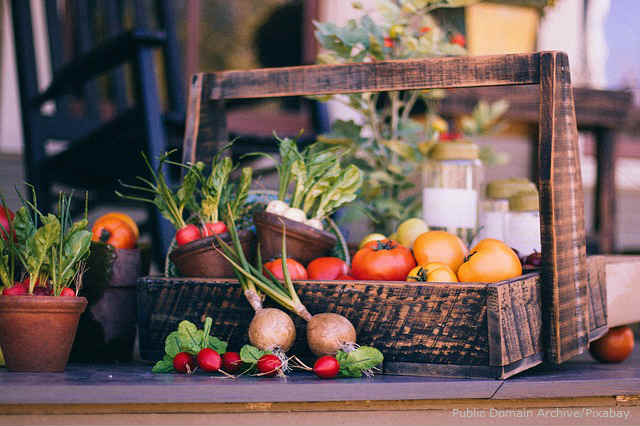Knowing when and how to harvest your garden can be a tricky business. Picking items too soon will leave you with an under ripe piece of food, too late and you won't get the peak flavor or shelf life. Use these tips for harvesting your garden to ensure you get the best of what your home's garden has to offer.
Harvesting vegetables
Harvest time can come all at once and the challenge becomes how to handle baskets and baskets of vegetables. It's best to take a basket and peek at
your vegetable garden every day. Picking vegetables as soon as they're ripe will encourage the plant to produce more.
Most vegetables are at their peak flavor when they're fairly small. Zucchini for example, which can easily overtake your garden plot, are best picked when they are about 6-7 inches long. Once they're longer, they can become tough and woody. If you miss one it can seem like it grew overnight into a foot-long zucchini. If that does happen, grate it and use it for muffins, loaves and even cookies.
Be sure to keep track of what you planted along with the seed packets so you'll know what to expect from each of your plants. Some varieties may not be at their ripest when
you expect them to be.
Harvesting herbs
Maybe you have a small planter outside your kitchen window for easy access to herbs while cooking. If you do, be sure to cut them back frequently to make sure they keep producing for you. You should also trim them back to prevent them from blooming, which can cause the flavor to change. Basil especially needs to be pruned frequently to make sure it remains productive.
If you find that you have an excess of thyme, oregano or any other green leafy herbs, dry them out in a brown paper bag before storing them.
Harvesting tomatoes
Because of the large range of tomato varieties, no two will be the same. Heirloom tomatoes come in multiple colors and may never be the iconic red that you're looking for when they ripen. Other tomatoes are perfectly ripe when they reach that bright red hue.
A tomato is ripe when it releases easily from the stem. If you reach into your garden and lightly graze a tomato plant and they fall off -- they're ripe. Gather those up and make a delicious tomato salad with mozzarella, balsamic vinegar and some of that excess basil you have on your back porch.
Once you've picked a few of the tomatoes in your garden, you'll learn when your tomatoes are ready to be picked in the future.
Harvesting peppers
If you have peppers
growing in your backyard garden, pick them once they are full-sized but still green. If left on the vine, they will change color to red, yellow or orange depending on the variety but will become less crisp. If you have hot peppers planted in your yard, the longer they are left to ripen on the plant and deepen in color, the hotter they will become.
Harvesting pumpkins and squash
If you have the space to grow pumpkins in your backyard, you should be sure to harvest them when the fruits are deep orange and the shells are so hard they can't be pierced with your fingernail.
For summer squash, smaller is better. If the fruit remains on the vine too long, the outside becomes tough and the inside becomes seedier and watery.
For winter squash, harvest them when the shell is hard enough you cannot pierce it and when the rind is deeply colored.
Store your squash and pumpkins in a cool dry place after letting them cure in the sun for about 10 days.
Harvesting lettuce
If you have lettuce in your backyard garden, you could try a "cut and come" method where you cut off what you need and allow it to regrow before harvesting more later. Cut the leaves about one inch above the soil line for the plant to regrow for another cutting.
You can also harvest outer leaves as soon as the plants have at least five or six full-sized leaves on the plant. Both methods will allow the plant to replenish itself and regrow for continuous harvesting.
Testing for ripeness
Making sure your plants are ripe before harvesting will ensure that you have a delicious array of items to eat from your garden. Testing for ripeness involves your senses: touching, smelling, seeing and of course tasting! Your hands will quickly learn what ripe tomatoes feel like after a few weeks of a successful harvest.